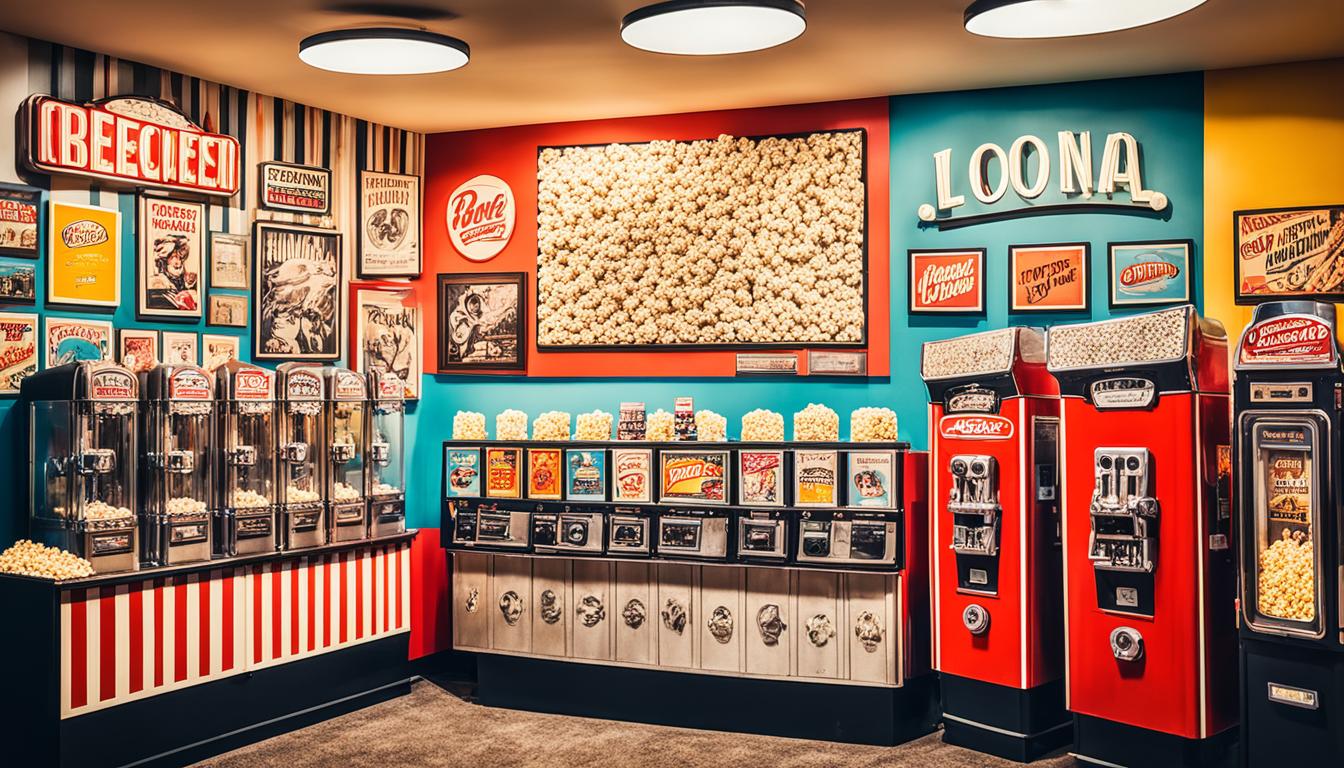Think you know everything there is to know about popcorn? Hold your kernels! Brace yourselves for a tantalizing journey into the captivating history of popcorn at movie theaters. How did this humble snack go from being seen as unclean and noisy to becoming an inseparable part of the cinematic experience? Strap in as we unveil the surprising origins, thrilling evolution, and economic significance of popcorn in movie theaters.
But first, let’s start at the beginning. Did you know that popcorn’s history actually dates back 8,000 years? Yes, you read that right! Its origins can be traced back to the cultivation of maize in Central America. Join us as we unravel the fascinating stories behind popcorn’s journey through time, from its reluctant acceptance in movie theaters to its emergence as a beloved tradition.
The Rise of Popcorn as a Movie Snack
Popcorn became the quintessential movie snack due to a combination of factors. It was affordable for both sellers and customers and didn’t require extensive equipment to make. During the early days of movie theaters, popcorn vendors set up outside the venues, but owners were hesitant to allow the snack inside due to cleanliness concerns.
However, the introduction of sound in films in the late 1920s brought a wave of new audiences to movie theaters, leading to a surge in attendance. Popcorn, being an inexpensive treat, became popular during the Great Depression, as people sought affordable luxuries. As movie theaters struggled financially, they began allowing popcorn vendors to sell their snacks in the theater lobbies. Eventually, movie theaters realized the financial potential and started incorporating their concession stands.
Popcorn’s association with movies intensified during World War II when theater concessions became crucial due to sugar shortages. Over time, popcorn became inextricably linked to the film industry, with its aroma and taste evoking nostalgia and happy memories of movie-watching experiences.
The Evolution of Popcorn Consumption
Over the years, popcorn consumption has undergone significant changes in response to evolving technology and shifting cultural trends. Originally enjoyed primarily at circuses and fairs, popcorn gradually transformed into a prominent cinematic snack with the rise of movie theaters.
The late 19th century saw the invention of steam-powered popcorn makers, which revolutionized the production and sale of popcorn. This newfound convenience made popcorn a popular choice at outdoor sporting events and street fairs, expanding its reach beyond traditional entertainment venues.
As movie theaters recognized the profitability of popcorn sales, it quickly became an integral part of their revenue streams. Popcorn’s link to the film industry solidified, creating a long-lasting association between the two. The theater experience soon became synonymous with savoring a bag of freshly popped popcorn.
In the 1970s, the introduction of microwave ovens further transformed popcorn consumption. Families could now enjoy the convenience of microwave popcorn products in the comfort of their homes, replicating the same flavor and experience of movie theater popcorn. This innovation allowed for increased accessibility and convenience, contributing to the continued popularity of popcorn as a beloved treat.
Today, popcorn remains a cherished snack for both movie nights at home and trips to the cinema. Its evolution from a humble circus treat to a cinematic staple reflects the enduring appeal and cultural significance of popcorn in our modern society.
The Economic Significance of Popcorn in Movie Theaters
Popcorn plays a significant role in the economic success of movie theaters. Concession sales, primarily driven by popcorn, account for an estimated 85 percent of movie theater profits. The profitability of popcorn stems from its low production cost and the ability to sell it at a high markup. Movie theaters heavily rely on concession sales to offset the costs associated with screenings and distribution rights.
Popcorn’s popularity among moviegoers has remained consistent over the years, thanks to its strong association with the movie-watching experience. Advertisements and marketing campaigns often directly link popcorn to the cinema, enhancing its appeal and demand. This strong connection has not only made popcorn a beloved snack but also shaped and influenced the popcorn industry itself.
Cinematic popcorn traditions have led to preferences for yellow corn varieties over white corn, as yellow popcorn is commonly associated with movie theaters. Additionally, the popularity of popcorn in the film industry has led to the development of microwave popcorn products, replicating the taste and experience of the theater snack in the comfort of one’s home. Popcorn’s economic significance goes beyond being a beloved treat; it remains an essential part of the movie theater experience, contributing to the industry’s success.
